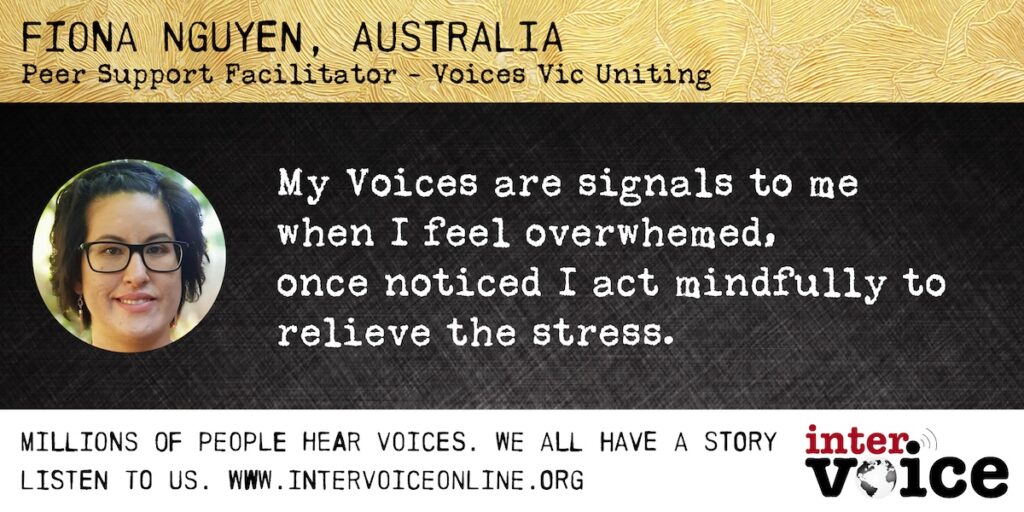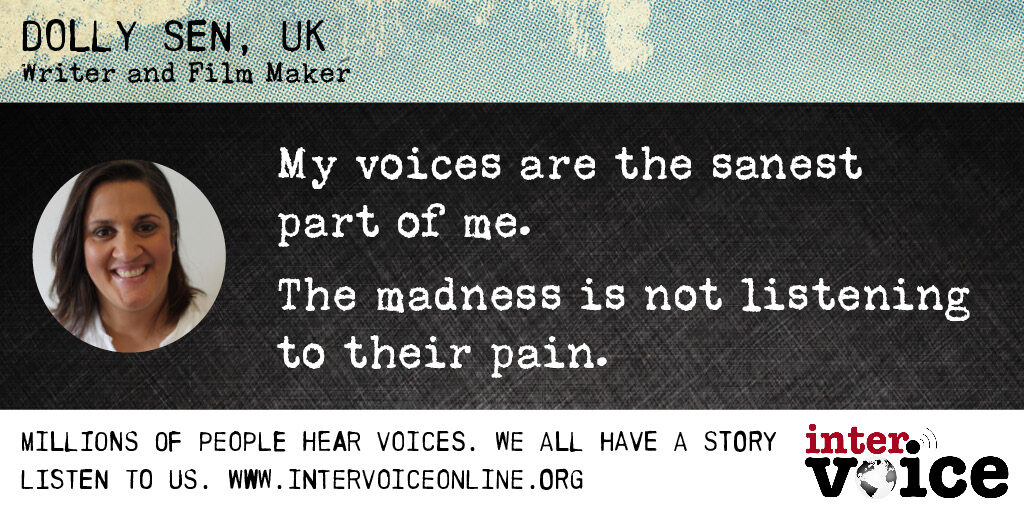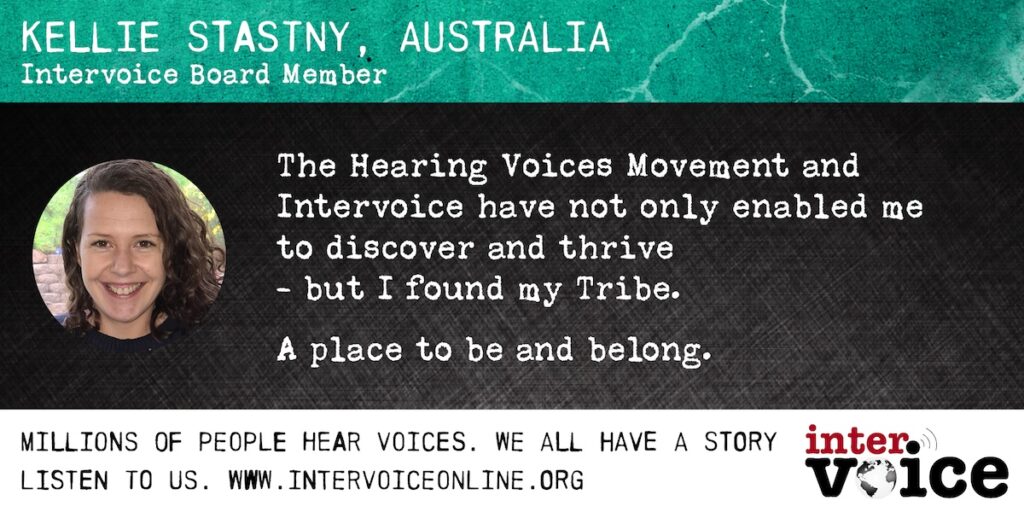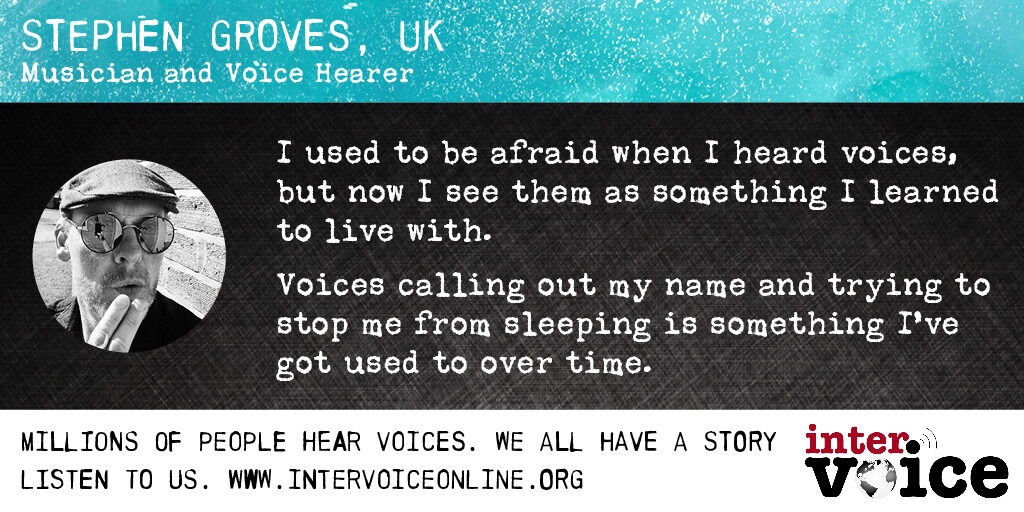Congress Day One
Introduction and Welcome
The Congress was jointly opened by Hywel Davies, Chair of Hearing Voices Network Cymru, and Paul Roberts, Chief Executive of the Abertawe Bro Morgannwg University Board of Health, who welcomed everyone.
Hywel welcomed everybody to Cardiff, the capital city of Wales and to the 4th World Congress, he expressed his happiness and pride that Wales had been chosen as the host nation for this years congress. He welcomed delegates in Welsh, English and other languages. Hywel reminded the meeting that 2.9 million people live in Wales and during the last 5,000 years people from Wales have made/or do make a significant contribution to the human race. Wales has time and time again punched above its weight in the fields of religion, music, drama, cinema, sport, philanthropy, scinec and politics and other significant areas of human activity. Hywel also reminded the Congress of the Welsh nation’s special contribution to poetry and concluded his welcome by quoting the final verse from Dylan Thomas’ poem “And Death shall have no Dominion” and Waldo Williams’ “Child of the Earth” (Plentyn Yddaear).
Paul Roberts explained that the National Health Service in Wales is devolved from the English NHS and is run by the Welsh government. It has a different ethos and embraces traditional values. This includes working with Third Sector organisations. Paul is Chair of one of the seven Welsh Health Boards in an area to the west of Cardiff covering Swansea and Port Talbot. The Boards were set up less than three years ago.
Paul congratulated Intervoice on its 25th anniversary and said it was encouraging to see how the message had spread all over the world. He is very impressed by the model of full and equal participation of experts by experience and experts by professional training. He likes the idea of full participation in civil society, but is aware of the on-going battle against stigma. Although many parts of the Health Service in Wales aspire to provide services in partnership, it rarely happens in reality.
Paul said that he had moved to Wales to take up the post about a year ago and has found it to be a very friendly and welcoming place and there is much to admire in the statutory sector there. He also acknowledged that there is much to learn and likes the new ways of working with the Third Sector. He particularly likes the term “experts by experience” rather than the “service user” ethos. He is interested in different models beyond the traditional medical model although there is a long way to go. He was interested to learn that there are 15 hearing voices groups in Wales.
He concluded by wishing everyone a very successful Congress and extended a very warm welcome to Cardiff.
Congress Day One: Keynote speeches
Beginning a Movement (Paul Baker & Ron Coleman)
Paul began his talk by taking the traditional Intervoice photo of the audience, but this year with everyone making a “V for Victory” sign.
He said that participation was the key term rooted in the beginnings of the movement and one which must be protected. It has developed principally as a network of networks, like a spider’s web and, unlike other organisations, hasn’t developed into a hierarchy. Marius Romme is key to establishing this approach from his own rigorous commitment to social action.
Paul first met Marius in Trieste in 1988 at a World Health Organisation event which he was attending with a voice hearer. Paul was there as a mental health activist. Inspired by what he heard, he set up the first network outside of the Netherlands in Manchester. Very soon, Ron Coleman became involved and Paul said that within a year, both their lives were transformed. The recovery journey is for all – professionals, activists and voice hearers.
The next step is to tackle civil society and change perceptions about voice hearing. Paul said he is looking for stories of hope and recovery.
Ron told his story: in 1990 he was in a Manchester hospital diagnosed with schizophrenia. Life: miserable. He got a new support worker, Lindsay Cooke, who was ginger, had freckles, was always smiling and bounced rather than walked. The first day she lasted half an hour, but she was stubborn and persisted. Ron said, “She was the first person to believe in my capacity to recover.” She started popping in and one day told him of a new group in Manchester. Unwilling, at first Ron was reluctant to go and it was only the suggestion of a beer afterwards that persuaded him. There he met Anne Walton at the group. For the first time, the reality of his experience was acknowledged. Until then, he had always been told to ignore/distract/play scrabble (at which he became an expert). He never made it to the pub but instead sat in the car with Lindsay discussing what had happened.
Ron realised that responsibility had moved to him. He could no longer sit and wait for a “cure.” He continued to attend the group and learned techniques for negotiating with the voices which is a natural way of working. It is a simple, not complicated, intervention. Voice hearers can use this as a strength. Later, other people helped him including Mike Grierson who invited him to go to the pub every Friday. Unbeknownst to Ron, this was “reintegration.”
Ron said that he has had the pleasure of sacking Paul Baker twice. He saw that voice hearers had to take over the running of their own group which eventually developed into a network. There has since been massive growth. However, this was not without cost as the group were not all convinced this was the right way forward and some left. The lesson to learn from this is to find a way forward which will lose no-one. We need to embrace the diversity of experience and opinion and to respect other people’s own truth. This is the reality of a person centred approach.
We need to walk into the future with confidence. No matter what people say, we are proud of who we are. There is no shame in being a voice hearer or in being given labels by others. The movement is the emancipation of voice hearers. We should have the freedom to be citizens and treated with dignity and respect and we need to go forward together.
“Recovery is a human right.” (quoting Hywel Davies)
The first 25 years (Professor Marius Romme & Dr Sandra Escher)
Marius thanked Hywel Davies for his warm welcome and for the Welsh network’s hospitality.
Sandra and Marius were both involved from the start of the hearing voices movement. Sandra said that they had different approaches: she was a journalist and liked to get to know a person; which was very different from Marius’ approach to interviews as a professional psychiatrist.
Sandra and Marius both described how things used to be. Hearing voices was seen as hallucination or as schizophrenia. People were told they had a life-long condition from which they would not recover and they needed to adapt to the idea that they would never have a career or a steady love story. They could also look forward to a life of medication. There was no hope. Voice hearers could not trust their brains.
However, Marius and Sandra were able to prove that hearing voices was a sign of reaction to problems and it was not an illness. Sandra said that being emotional was not the same as being chaotic. People can learn to develop themselves.
Reality is the background to voice hearing and voice hearers have to accept that they have to do a lot themselves to recover. They must take back the power; change the relationship and live their own lives. Voice hearers can build up their own self-esteem. They need courage to overcome shame, guilt and be willing to talk through problems. There can be trauma and spiritual conflict at the roots of experience and acknowledging that emotions are involved is important. People can learn to make sense of their voices and understand that they have a meaning. They can learn to cope better with their emotions. They can learn to tell their own stories comprehensively. Many people become proud of their voice hearing. It is important for emancipation and you can only emancipate yourself.
Coming from the past to the present, there is a very long list of people who have helped to create the movement and continue to be active. One piece of luck was breaking through the language barrier which enabled the message to spread. Now there are many people offering training.
The Future
Now, the hearing voices movement is becoming a worldwide movement and there is a campaign to sign up a million members. There is an A-Z of coping with voices which is a simple and clear way to communicate. The problem is that there are many voice hearers that don’t know about it. There needs to be more creativity to get the message on to the street and to come out of isolation.
We need to involve more families and friends and offer them a better possibility. Parents need alternative ways of relating to their child, understanding and respecting and then the child can become normal again.
It is time to get rid of the label of schizophrenia.
Intervoice could set up a task group with the aim of every country setting up a centre to help people come off medication. Will Hall already has developed a guide and there is also a Canadian group.
Intervoice could also look at developing more advocacy and peer support, for example, buddies and finding a way to support more training.
We are aiming to grow into a voice hearing society; we hope that more people will come forward as voice hearers and we need to become politically involved. It will be impossible to change health services without political influences. We are aiming for an inspirational future.
Marius referred to Stella and Phil Thomas who, in 1994, stayed for a weekend and it proved to be a very important moment. There remains a beacon of hope. Marius said, “It gave us psychiatrists’ permission to go beyond peddling pills and a different way of working. It was a key moment in psychiatry.”
100 Years of schizophrenia – is this enough? (Professor Robin Murray)
Robin is Chair of a panel appointed to review the care of people with psychosis in the UK. The panel comprises 12 people, two with experience of psychosis and the others drawn from a variety of backgrounds including a nurse, an economist, a psychiatrist, a journalist, a social worker and someone from a mental health charity. The review has involved a questionnaire and visits to facilities. There were 2,000 replies to the questionnaire that revealed some heart wrenching stories.
The findings are not yet complete but Robin described his initial impressions:
- There are some wonderful, caring people in the health service
- Some of the inpatient units, particularly in large city hospitals, are so horrendous that people are frightened to approach them and have to be compelled
- The system grinds down staff as well as patients, idealism and kindness disappears after years in the system
- It is surprising how little psychiatrists know about the medicines they prescribe
- Treatments such as CBT are not sufficiently available – they are provided theoretically, but in practice resources are so stretched that people may have to wait two years for CBT
- In Great Britain, people have no choice in psychiatry unlike physical health. If someone wanted to have a different psychiatrist, they would have to be referred by their current psychiatrist (who would then lose some of their budget). There are also stories of lack of continuity – one extreme case was of someone who saw 23 psychiatrists over the course of three years
- Patients/clients are not involved enough
“Schizophrenia” was a term coined by Bleuler 100 years ago, but its use has become a big problem. People diagnosed as schizophrenic feel condemned, stigmatised and it carries an implication of deterioration. Tabloid headlines have altered its meaning. As a term, schizophrenia has no validity: there is no test to prove it exists. What can be used instead? Robin hasn’t used “schizophrenia” in his clinical practice for over a decade. He uses “psychosis” which is not a great alternative but at least it doesn’t carry the implication of deterioration.
The UK 2000 National Survey of Psychiatric Morbidity showed that 10-15% of the population have experience of hearing voices and may have once been diagnosed as psychotic. Many voice hearers don’t need to see psychiatrists. There are many whose voices say nice things, but those whose voices say horrendous things need to seek help.
Psychosis can be seen as part of a continuum of a distribution curve – just as height, weight, blood pressure can and there is not a cut off point where one suddenly becomes psychotic, but there is a time when it becomes helpful to intervene. We need to focus on the underlying factors both positive and negative.
Acute psychosis is associated usually with increased salience. Stress can excite releases of dopamine so that salience is attached to ideas and objects, for example, colours become brighter. This is sometimes described as “delusion”. Anti-psychotics can reduce the underlying dopamine drive but they cannot resolve someone’s earlier beliefs and experiences. Intense experiences cannot be treated by medication; these need cognitive input and it takes a long time to unlearn.
AESOP: an epidemiological study of first episode psychosis in three English cities. This survey showed that population density seems to have an effect on people experiencing paranoid ideas – research has shown that is far more common in South London than less densely populated areas. Psychosis was three times more common in South London than in the other two cities, Nottingham and Bristol. The best predictor was the proportion of people who voted in the General Election. Psychosis is much more common in areas where there are more disenfranchised people, for example, migrants and other disadvantaged groups. Psychosis is increased where there are high levels of abuse and bullying or other victimisation events. Drug use, for example, amphetamines, can increase the risk of psychosis, as can cannabis particularly as, over the years, it has become available in much stronger forms, but not everyone who uses cannabis develops psychosis. Environmental factors and individual susceptibility may also help to explain why some people develop psychosis and others don’t.
Conclusion
The care of people with psychosis is very far from satisfactory, but there are areas of agreement with orthodox psychiatry and the Hearing Voices Movement.
Constructs and Formulations: could this be the future? (Dr Lucy Johnston)
Lucy described the controversy surrounding the forthcoming publication of DSM-5, due to be published in May 2013. The disagreement focuses largely on its proposed revisions, for example, there are new categories which are bizarre: Disruptive Mood Dysregulation Disorder (temper tantrums); an expanded Attenuated Psychosis Syndrome (this has been dropped) and low reliability of the new categories. There are also significant concerns about its close links with drug companies.
There was a forthright response from the Division of Clinical Psychology which triggered a world-wide protest. The Society for Humanistic Psychology set up an online petition (www.ipetitions.com/petition/dsm5) . The Chair of the DSM4 taskforce, Professor Allen Frances, also objected, “DSM-5 will radically and recklessly expand the boundaries of psychiatry.”
Although the protests are not about the idea of diagnosis, the question is whether psychiatric diagnosis is on the way out? Is there an alternative for psychiatry given that diagnosis is the foundation of the psychiatric approach? From a service user perspective, diagnosis is the first crucial step in the career of any psychiatric patient. People with problems are turned into people with illnesses.
The Hearing Voices Movement alternative to diagnosis is construct: how can we make sense of your voices? Romme & Escher (2000) look at the effect of historical relationships, psychodynamic expression and metaphorical relationship. A construct has a lot in common with the concept of formulation that is used in clinical psychology.
The British Psychological Society has created good practice guidelines on the use of psychological formulation. Formulation is a key skill in clinical psychology in approaching mental distress. Its main points are:
- A summary of core problems
- How difficulties relate to one another
- Why difficulties have arisen at this time
- What interventions are there?
- It is never finished
Formulation is different from diagnosis because it is a “best guess” or hypothesis. If adopted, it would need to replace the entire diagnostic system and so would be a radical act. The differences between diagnosis and formulation are:
- Formulation gives hope, it is empowering and restores meaning. Diagnosis silences people
- Formulation would not say to people “You have schizophrenia.”
- Formulation looks at a person’s strengths as well, rather than diagnosis which asks “What is wrong with you?”
- Formulation looks for resolution, not just treatment
Formulation and construct could work together with construct bringing the peer support principles and emphasis on self-help. They are both based on personal meaning, drawn up collaboratively with the service user, but there are differences:
- Formulation is seen as a high level clinical skill requiring professional input whereas constructs can involve input from families, friends and self-help groups.
- Formulation is based in mainstream psychological theory and evidence whereas constructs accept all frameworks and beliefs.
Psychiatrists are becoming more interested in formulation, but the danger is that they may continue to use diagnosis as well.
Lucy said that she had used formulations within her own work and initial research findings have been very positive. It looks at resolution not just treatment. The evaluation from the local team who were introduced to formulation showed that 100% of participants found it a helpful approach.
Future direction
More research is needed into whether formulation and constructs can be an alternative to diagnosis:
- Is it helpful to service users?
- Do professionals find it useful?
- Does it help recovery?
- Does it reduce hospital admissions/use of medication and thus save money?
Eventually, we need to replace the whole diagnostic system. Formulation is a radical act; it gives people hope and restores meaning. Diagnosis silences people.
“Helping to create meaning out of despair should be the core function of every mental health professional.”
Living Mindfully with Voices (Rufus May)
Rufus welcomed everyone and their voices to the conference. He talked about mindfulness yoga as a way of helping us to be in the here and now. We are often caught up in thinking about plans, worrying about the past. Mindfulness yoga helps to calm the mind and increase awareness. If practised regularly it can reduce stress levels, reduce fear and distract the mind from habitual distractions and create a safe place to go. “Welcome your unwelcome thoughts”. Can we welcome and acknowledge our voices rather than shooting the messenger?
Mindful activity is doing one thing at a time and focusing fully on it. When you become distracted, bring your mind back and keep repeating this step as often as necessary – even if it is a few hundred thousand times! If you keep getting distracted, pay some attention, it may be trying to tell you something; start to have a non-judgmental conversation.
Extreme mindfulness is when someone is experiencing terrifying emotions. Don’t try to get rid of them; acknowledge them “Hello, anger my old friend”. We need to learn empathy, to calm down and be kind to our self and to others.












